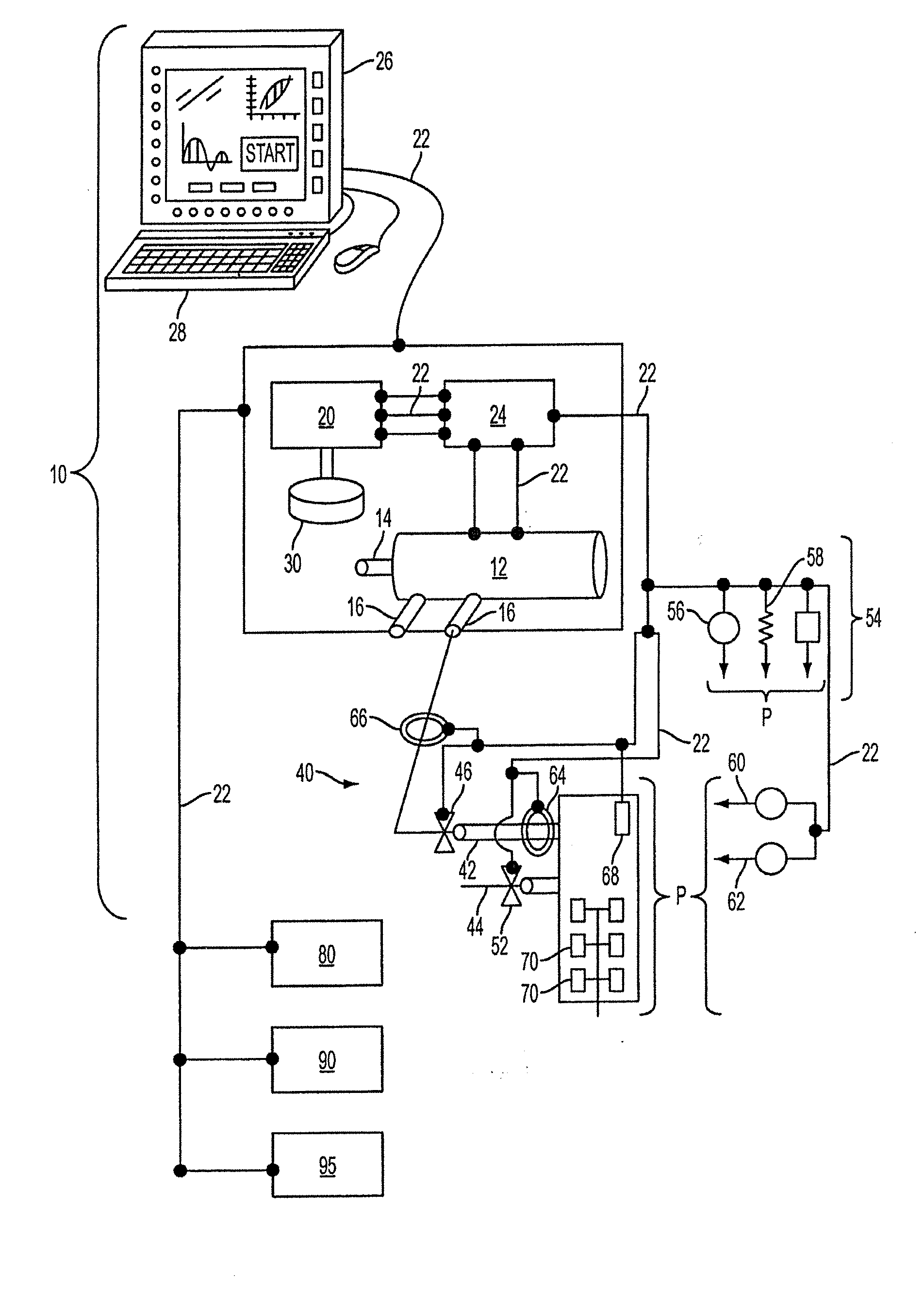Ventilator Apparatus and System of Ventilation
a technology of ventilator and apparatus, which is applied in the field of ventilator apparatus and ventilation system, can solve the problems of increasing respiratory frequency, increasing respiratory frequency, increasing frequency dependency, etc., and achieves the effect of facilitating the spontaneous breathing of the intubated patien
- Summary
- Abstract
- Description
- Claims
- Application Information
AI Technical Summary
Benefits of technology
Problems solved by technology
Method used
Image
Examples
Embodiment Construction
[0095]Referring now to the various figures and illustrations, those skilled in the relevant arts should appreciate that each of the preferred, optional, modified, and alternative embodiments of the inventive ventilator and ventilator system 10 and method of operation contemplate interchangeability with all of the various features, components, modifications, and variations within the scope of knowledge of those skilled in the relevant fields of technology and illustrated throughout the written description, claims, and pictorial illustrations herein.
[0096]With this guiding concept in mind, and with reference now to FIG. 1, one possible embodiment of a ventilator and ventilator system 10 is illustrated, which is in communication with the patient P undergoing ventilation therapy. The ventilator and ventilator system 10 also preferably includes a gas supply pump and / or pressurized gas source 12 having a positive pressure port 14, and optionally a negative pressure port 16. The gas pump o...
PUM
 Login to View More
Login to View More Abstract
Description
Claims
Application Information
 Login to View More
Login to View More - R&D
- Intellectual Property
- Life Sciences
- Materials
- Tech Scout
- Unparalleled Data Quality
- Higher Quality Content
- 60% Fewer Hallucinations
Browse by: Latest US Patents, China's latest patents, Technical Efficacy Thesaurus, Application Domain, Technology Topic, Popular Technical Reports.
© 2025 PatSnap. All rights reserved.Legal|Privacy policy|Modern Slavery Act Transparency Statement|Sitemap|About US| Contact US: help@patsnap.com



